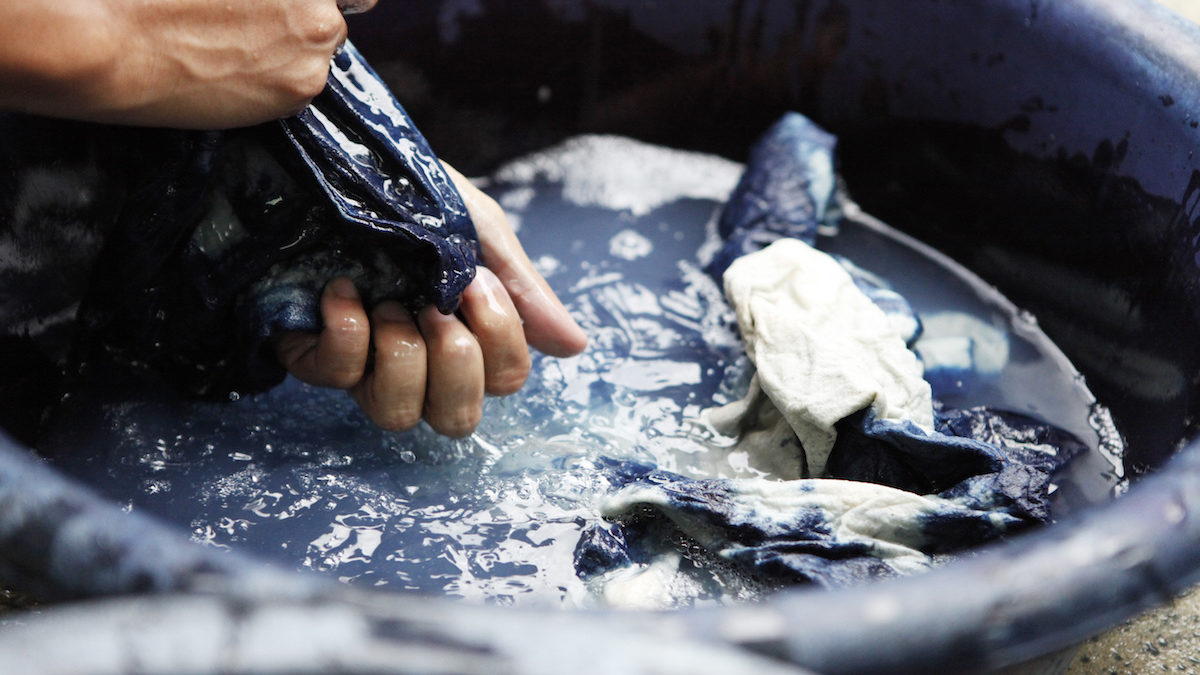Sustainable Laundry: 8 Tips To Help You Look After Your Clothes When Cleaning Them

When it comes to questions of sustainability and fashion, a lot of what is spoken about revolves around the production of a garment and then how it is recycled after we use it. But this whole conversation is missing out the middle man – the environmental impact of that item while we own it.
According to Fashion Revolution, up to 25 percent of each garment’s carbon footprint comes from the way in which we wash and care for them. It’s important then that we don’t just consciously buy and recycle; we’re also looking after them consciously too. This involves finding a fine balance between keeping our clothes for as long as possible, looking after our clothes so that they then last longer, and restricting our water and energy usage.
“It’s important to only wash your clothes when they need it rather than in between every wear,” says Lulu O’Connor, founder of Clothes Doctor, the UK’s first online maintenance service for your clothes. “One of the most common problems we find when people send their items to our workshop is that garments have been over-washed or damaged due to dry cleaning.”
To help you wash your clothes sustainably then, we asked O’Connor for her very best sustainable laundry tips. Tumble dryers and 60-degree spins, be gone.
Top Tips For Washing Your Clothes Sustainably
Freshen Your ‘Fits With A Quick Steam
“Steaming is a really natural method of refreshing your garments and a very useful tool for quickly treating any items that you suspect of being infested by clothes moths. It will not only reduce the appearance of wrinkles (perfect for silk) but will also remove any odour, as steaming kills 99 percent of bacteria.
“The steam causes the fibres to swell and the fabric too, therefore, look shinier and more colourful. You can also use steaming for dresses with beads or sequins, suits, and other tailored items which can’t be submerged in water.”

Wash Less, Wash Better
“Over-washing our clothes is the number one reason that a wardrobe favourite might fade, shrink, or lose its shape. Washing too often will age a garment prematurely by causing the fibres to deteriorate faster. The key is to only wash your clothes when they really need it.
“Cotton, linen and many manmade fibres can be washed at home in the washing machine. We recommend that you use an eco-friendly detergent such as our Signature Eco Wash, use a low temperature and mesh laundry bag to catch any loose fibres or shedding microfibres. Wash at 30 degrees or on an eco-setting if your machine has one, to save on water and energy, and avoid tumble dryer.”
Gently Does It With The Hand Wash
“Choosing to hand wash your garments rather than sending them to the dry cleaners can do wonders to keep them looking their best. A quick, gentle hand wash with one of our Eco Wash Detergents will naturally clean your clothes and nourish its fibres. Be sure to test any product on a hidden part of the fabric and avoid washing garments with any decorative beading, sequins, tailoring, or padding. You can follow our guides on how to hand wash silk and wool at home.”

Air Your Garms Between Wearing
“It’s important that we give our clothes time to breathe between wearing as hanging your garments will allow the fabric to relax and any wrinkles to fall out. Air dry your clothes where possible to cut down on energy consumption and more microplastics being shed.
“An extra handy tip when doing so is to try hanging your clothes in the bathroom in the shower, as the humid air will make your clothes look smoother. For garments like cashmere and wool, leave to dry flat on a towel.”
Brush The Dirt Off
“Depending on the type of fabric, a clothes brush is a great way to get rid of mud and other marks on clothing – you’d be really surprised at how effective they are (stay tuned as we’ll be launching one soon). We recommend using a soft bristle brush to remove any surface lint, dust, hair, and food particles and give the garment and overall refresh.
“This is perfect for sturdier fabrics like wool blends, blazers, and suit jackets. Begin at the top and work your way down, always brushing downwards in a gentle motion.”

Invest In A Wash Bag
“Using a wash bag can help prevent micro-plastic pollution by trapping microfibres in the bag to then go safely into the bin, while also protecting any of your delicate clothing from snagging.”
Say No To Palm Oil
“[In terms of your detergent choice] it depends on which environmental factors you consider to be most pressing. For example, we at Clothes Doctor feel really strongly about keeping our carbon footprint as low as possible and protecting animals and wildlife.
“As such, you can see on the side of our products icons showing that they are made in the UK, are cruelty-free and are free from palm oil, which as we all know, contributes to the destruction of the natural habitats of animals such as orangutans. We don’t know any other detergent that is free from palm oil, but this isn’t something you’d be able to see from the ingredients list.”
Say Yes To Natural Fragrances
“We also like to use natural fragrances, however natural fragrances at high doses can be quite hazardous. Did you know that if a lemon was given the same labelling requirements as detergents, it would need a hazard label on it? When we started we made detergents without preservatives as we wanted to keep our ingredients super simple.
“However, without preservatives, the detergent can spoil quite quickly and this contributes to more waste, and so for the sake of our low waste mentality, we now put some harmless preservatives in our detergent.
“[What detergent to use] is quite a complicated question and there are always trade-offs, but I think as consumers we need to go for brands that we believe are making good choices and acting in the spirit of genuine environmental stewardship, rather than just greenwashing.”


















